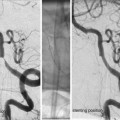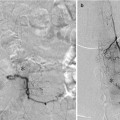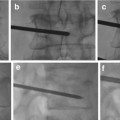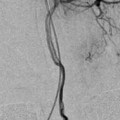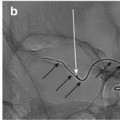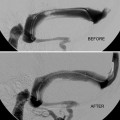Drug dosage, mg
Drug
3–6 months
6–12 months
1–3 years
=/more than 3 years
Melphalan
2.5
3
4
5
Topotecan
0.3
0.3
0.3
0.4
Carboplatin
Not tested
30
30
30
The standardized dose is customized to the specific angioanatomy of the patient and can be increased by up to 50 % if large extraocular branches arising from the ophthalmic artery are present, as seen by angiography or if a previous treatment did not result in sufficient tumor reduction.
The dose is generally decreased if the patient has undergone recent intravenous chemotherapy and/or radiation treatment, if the microcatheter is in “wedge flow” within the ophthalmic artery, if there was an exuberant inflammatory reaction prior to treatment, if there was a decrease in electroretinogram amplitude or in visual acuity as a result of prior treatment, if there was severe myelosuppression as a result of prior treatment, or if the total dose of melphalan would exceed 0.5 mg/kg.
Medications
No routine pain medications or antibiotics are administered pre- or post-procedure.
Patients may require standard antiemetics postanesthesia, such as ondansetron.
Procedure
General Considerations
General endotracheal anesthesia.
A nasal decongestant (oxymetazoline hydrochloride, 0.05 %) is sprayed in the nostril on the treatment side to reduce the diversion of drug into the nasal circulation.
The fluoroscopy equipment is calibrated to a low-dose pediatric protocol to limit radiation dose.
Access
The right or left femoral artery is punctured using a 4 French Micropuncture® Introducer Set (Cook Medical, Bloomington, IN) including a 21G needle, 0.018″ wire, and 4 French dilator.
After puncturing the artery and advancing the wire coaxially, the needle is exchanged out over the wire for the 4 French dilator that is directly connected to a continuous heparinized saline flush (1,000 U heparin/1 L NS) using a Y hemostasis valve.
The right and left groins are alternatively punctured for patients undergoing multiple consecutive procedures.
Angiography
A blood sample for measurement of an activated clotting time (ACT) is sent, and a standard dose of heparin (70 IU/kg) is administered.
Much of the procedural can be performed using digital subtraction fluoroscopy as opposed to digital subtraction angiography, thus significantly decreasing the radiation dose.
In most cases, a straight microcatheter, such as the Marathon microcatheter (ev3, Irvine, California) or a Magic 1.5 microcatheter (Balt, Montmorency, France) is advanced over a Mirage 0.008 microwire (ev3, Irvine, California) through the abdominal and thoracic aorta, into the cavernous internal carotid artery. Angiography is then performed in order to visualize the angioanatomy and to determine whether selective catheterization of the ophthalmic artery is appropriate. In cases where the ophthalmic artery is too small or arises at an acute angle from the internal carotid artery, alternative techniques are used (see below).
Treatment Plan and Techniques
Direct Catheterization Technique
Assuming the ophthalmic artery is deemed appropriate, the microcatheter is positioned at the ostium of the ophthalmic artery, using fluoroscopic guidance and roadmap technique.
Selective angiography of the ophthalmic artery is performed with particular attention paid to the anterograde flow of contrast within the ophthalmic artery and the presence of a choroid blush (Fig. 1
Stay updated, free articles. Join our Telegram channel

Full access? Get Clinical Tree



